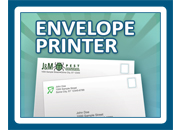Getting Started
When you load Credit Card Manager for Flash Drives, you will be given the option to "Create New Account”, "Open Existing Account, or "Open Most Recently Used Account". You may want to first select "Open Existing Account" and view the sample account that is included with Credit Card Manager for Flash Drives. This will familiarize you with the format used to record transactions (charges or credits). When you are ready to set up your own credit card account, select "File" from the top menu and then "Create New Account." Pull out the last credit card statement that you used to balance this credit card account. You will need this to enter information required for setting up a new account. If you have just obtained this credit card account and have not yet received a statement, the instructions below will tell you what information to record.
The first information you will need to enter is a name for this credit card account. Enter a name that will help you identify the name of this account easily. You may want to use your own name or the bank's name.
Next, enter the new balance that is shown on the credit card statement. If this is a new account and you have no statement, enter the amount of $0.00.
The next information you will need to record is the date from the credit card statement. If this is a new account and you have no statement, enter the date you opened the account. You will need to use the format MM/DD/YY to record your dates. If you have changed the default date format (which is located under Options from the menu), you will need to use the format you selected. MM is the month, DD the day, and YY the last two digits of the year. You are not required to type leading zeros. For example, you can enter the date as 01/01/08 or 1/1/8. The zeros will be inserted automatically (after you record the date) so the dates will be aligned making them easier to read.
Your opening balance will be recorded but will not show since your account is in "CURRENT" view. Change views if you want to see this transaction. See "Program Options" for information about different views.
The final information you will enter is your credit limit. This is the maximum amount you are allowed to charge on this account. If you need to change the credit limit later, you can do so by selecting Edit, then Credit Limit.
Now enter any transactions (charges or credits) you have made after the transactions shown on this credit card statement. This includes all transactions that you have made since you received this statement as well as any transactions that had not cleared when you previously balanced this account using this statement. If this is a new account and you have no statement, enter all transactions you have made.
Transactions are when money is credited to your account or when charges are made to your account. Credits are transactions such payments to your account or refunds from companies where you previously made purchases. Charges are transactions such as purchases or cash advances. They also include any money that is charged to your account by the bank such as finance charges or annual fees.
When entering transactions in Credit Card Manager for Flash Drives, first enter the date on which you made the transaction. Then press the Enter or Tab key.
Your cursor will now be in the description field. Type in a description for this transaction. This can be simply the name of the place where you made the purchase or the word "payment" if you made a payment to your account.
Press one time if this is a charge (purchase) or press two times if it is a credit (payment). This will place your cursor in the appropriate field for recording the amount of your charge or credit. If it is a credit (payment), you do not have to type a minus sign (-). Amounts in the credit column will be subtracted from your account. Amounts in the charge column will be added to your account.
The column where you enter payments is titled "Credit." The reason for this is because "Credit" is usually what is printed on credit card statements. In Credit Card Manager for Flash Drives, enter any payments or refunds in the "Credit" column.
Each transaction is automatically saved when you leave a field as long as you have a valid date entered for that transaction. The saved file is located in the CCMdata folder on your flash drive. You will want to periodically backup your Credit Card Manager for Flash Drives data files as you would any important computer files.
Return to top of page
Balancing Your Credit Card Accounts
When your credit card statement comes each month and you are ready to balance your account, take the following steps:
Before you begin...
1. Make certain that all your charges (purchases) and credits (payments) have been entered in Credit Card Manager for Flash Drives.
2. Look on your credit card statement and enter in Credit Card Manager for Flash Drives any finance charges, fees, or any other charges/credits made to your credit card account by the bank.
3. Select "View" from the top menu and make certain that CURRENT view is selected.
Balance your credit card account...
1. You will need to type the letter "R" beside each transaction that is listed on your credit card statement. The "R" stands for "Reconcile." Reconciling a credit card account and balancing a credit card account mean the same thing. The transactions will disappear off the screen as you type the "R" beside them since you are in the "current" view. Make sure you put an "R" beside any finance charge or fees that need to be reconciled.
2. Select "Edit" from the top menu then select "Balance Account..." Enter the CURRENT balance from your credit card account statement. It is called "new balance" on your statement. Credit Card Manager for Flash Drives will now compare this amount to the OPENING BALANCE shown on the screen in Credit Card Manager for Flash Drives. If these two balances equal, your credit card account is balanced. If not, the difference will be shown.
Correct any errors...
1. If you made a mistake while typing an "R" beside a transaction, select "View" from the top menu and switch the view to ALL. Then find the item you marked incorrectly and change it. You can balance your credit card account while the view option ALL is selected but it is easier if you do it while in the CURRENT view. There are less transactions on the screen in the CURRENT view making it easier to find transactions.
2. If the OPENING balance in Credit Card Manager for Flash Drives does not equal your CURRENT (NEW) balance on your credit card statement after you finish reconciling (marking with an "R") all appropriate transactions, you need to review your transactions in the ALL view and look for entry errors. Check the amount of each transaction for errors, check for duplicate entries, check for entry omissions, and check to make sure you only reconciled appropriate transactions. If you are unable to find the error, you can make an adjustment entry. To do this, enter a transaction with a description such as "Balance Adjustment" and enter the amount of the difference. Then place an "R" beside this transaction.
Return to top of page
Program Options
Create New Account
Use this option to create a new credit card account. You can create up to 100 accounts.
Open Existing Account
Use this option to open an existing account. The name of the file is displayed when you select the name you gave the account. Use this to identify your files when making backups.
Delete Existing Account
Use this option to delete an existing account. When you delete an account, it is permanent so before you delete an account you may want to backup the file.
Rename Open Account
Use this option to rename an open account if you want the account to have a different name from when you originally named it. You can rename the account you currently have open. If you want to rename a different account, open it, then rename it.
Export Account Data
Use this option to export your Credit Card Manager data to a tab delimited text file (*.txt). This allows you to import the data into a spreadsheet. When exporting data, you will be given the option to export All or a Range of transactions. If you select All, all the transactions that you see on your screen will be exported into the file. If you select Range, input the beginning date and the ending date of the range of transactions you want to export. Note that you will not be able to import the data back into Credit Card Manager for Flash Drives.
Print
Use this option to print a copy of your transactions. You will need to make sure the transactions you want to print are showing using the view you have selected. If not, change views. After you select Print, you will be given the option to print All or a Range of transactions. If you select All, all the transactions that you see on your screen will print. If you select Range, input the beginning date and the ending date of the range of transactions you want to print.
New Transaction
Use this option to insert a transaction line.
Delete Transaction
Use this option to delete a transaction. The deletion will be permanent.
Credit Limit
Use this option to edit your credit limit.
Find
Use this option to search for text or characters in Credit Card Manager for Flash Drives. The search will begin with the text following your cursor.
Insert Date
Use this option (or press ALT+D) to insert the current date in the date field. Your cursor must be in the date field before you select this option.
Calculator
Use this option (or press F2) to load Microsoft Windows Calculator.
Balance Credit Card Manager for Flash Drives
Use this option to reconcile your account when your monthly checking account statement arrives.
Current View
Use this selection to display only the transactions that have not been reconciled.
All View
Use this selection to display all transactions, those that have been reconciled as well as those that have not.
Options
Date Format
Use this option to select the date format you want to use. Four formats are available: MM/DD/YY (U.S.), DD/MM/YY (European), YY/MM/DD (International Standards Organization), and YY/DD/MM (Swedish).
Password Protect
Use this option to to create a password for using Credit Card Manager for Flash Drives. If you forget your password, you can reset it by reinstalling Credit Card Manager for Flash Drives.
Credit Card Manager for Flash Drives Help
Use this menu selection to view the instructions for Credit Card Manager for Flash Drives. You will be taken to our site.
About
Use this menu selection to view publisher information.
Return to top of page
Data Backup
To backup your data files, go to the CCMdata folder on your flash drive. Copy the CCMdata folder to another location (your computer or a different flash drive). In the event you need to use this backed up data, copy the CCMdata folder from backed up media back to the flash drive where you installed Credit Card Manager for Flash Drives.
Return to top of page
|





